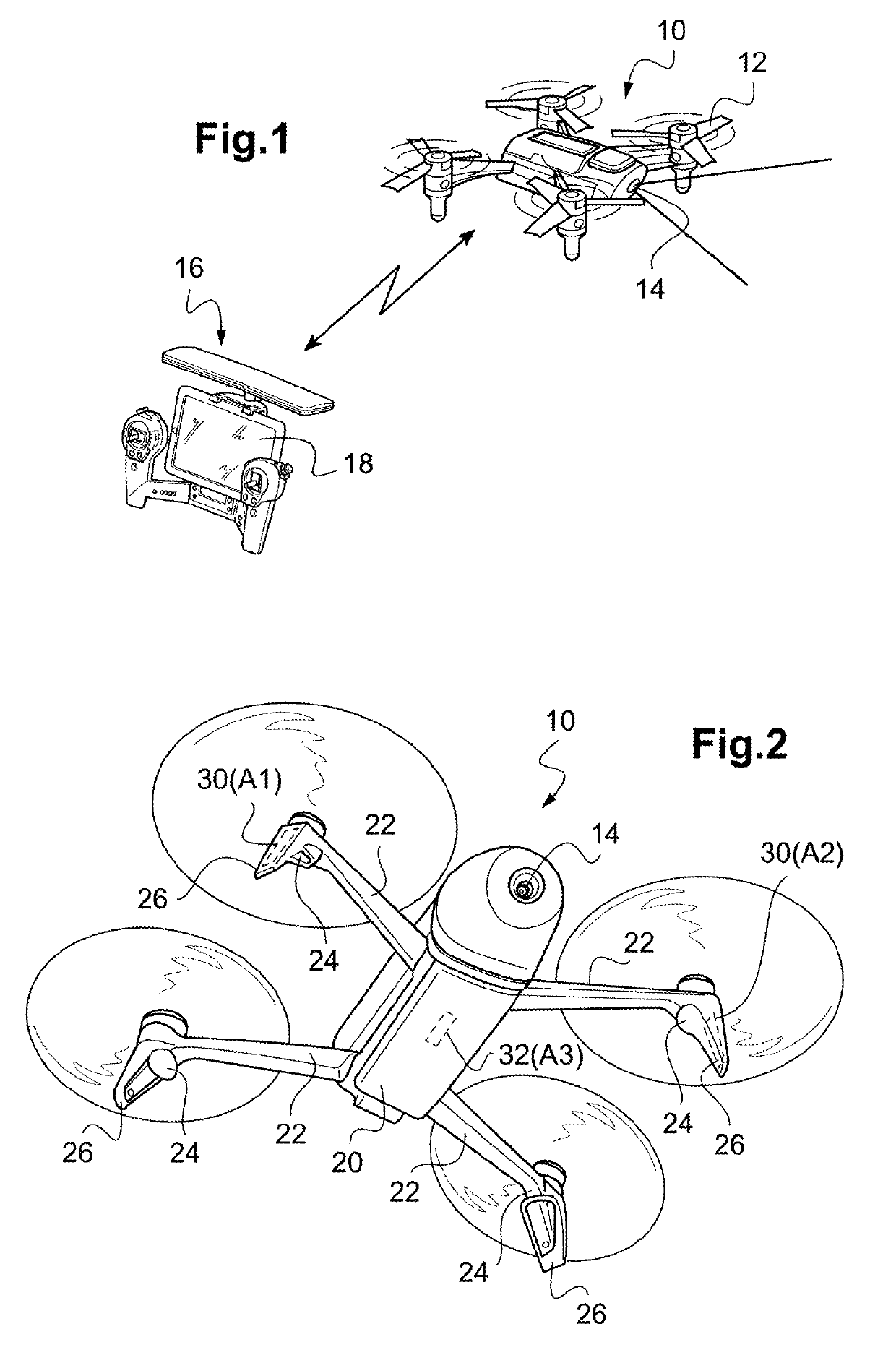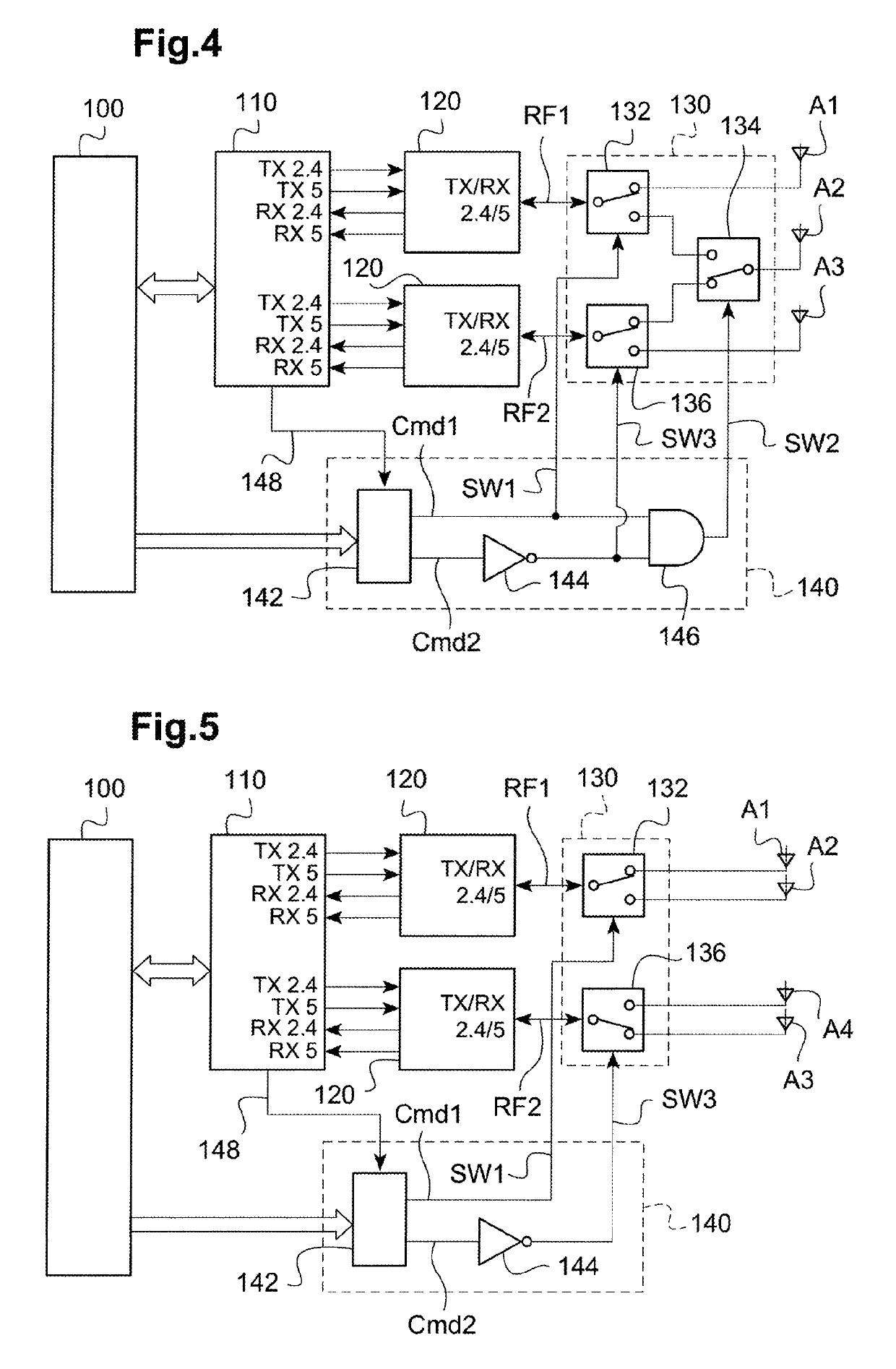Drone with dynamic antenna diversity
a dynamic antenna and drone technology, applied in the field of remote piloting, can solve the problems of significant data volumes, risk of sporadic loss affecting exchanged data and commands, and the regulation constraints applicable to the rf communication system, and achieve the effect of minimizing the signal/noise ratio and maximizing the data ra
- Summary
- Abstract
- Description
- Claims
- Application Information
AI Technical Summary
Benefits of technology
Problems solved by technology
Method used
Image
Examples
Embodiment Construction
[0030]An exemplary embodiment of the device of the invention will now be described.
[0031]In FIG. 1, the reference 10 generally denotes a drone that has four coplanar rotors 12, whose motors are piloted independently from each other by an integrated navigation and attitude control system. A front-view camera 14 is provided, allowing obtaining an image of the scene towards which the drone is directed. The drone 10 is piloted by a user by means of a distant remote-control device 16, hereinafter called “remote control”, provided with a screen 18 configured to display the image captured by the camera 14 of the drone. The remote control 16 is for example the Skycontroller model from Parrot, on which has been mounted a smartphone (pocket mobile terminal) or a touch-screen multimedia digital tablet of the standard type, not modified except the loading of a specific applicative software (such as the mobile application AR Free Flight from Parrot) to control the piloting of the drone 10 and th...
PUM
| Property | Measurement | Unit |
|---|---|---|
| altitude | aaaaa | aaaaa |
| distance | aaaaa | aaaaa |
| distance | aaaaa | aaaaa |
Abstract
Description
Claims
Application Information
 Login to View More
Login to View More - R&D
- Intellectual Property
- Life Sciences
- Materials
- Tech Scout
- Unparalleled Data Quality
- Higher Quality Content
- 60% Fewer Hallucinations
Browse by: Latest US Patents, China's latest patents, Technical Efficacy Thesaurus, Application Domain, Technology Topic, Popular Technical Reports.
© 2025 PatSnap. All rights reserved.Legal|Privacy policy|Modern Slavery Act Transparency Statement|Sitemap|About US| Contact US: help@patsnap.com



